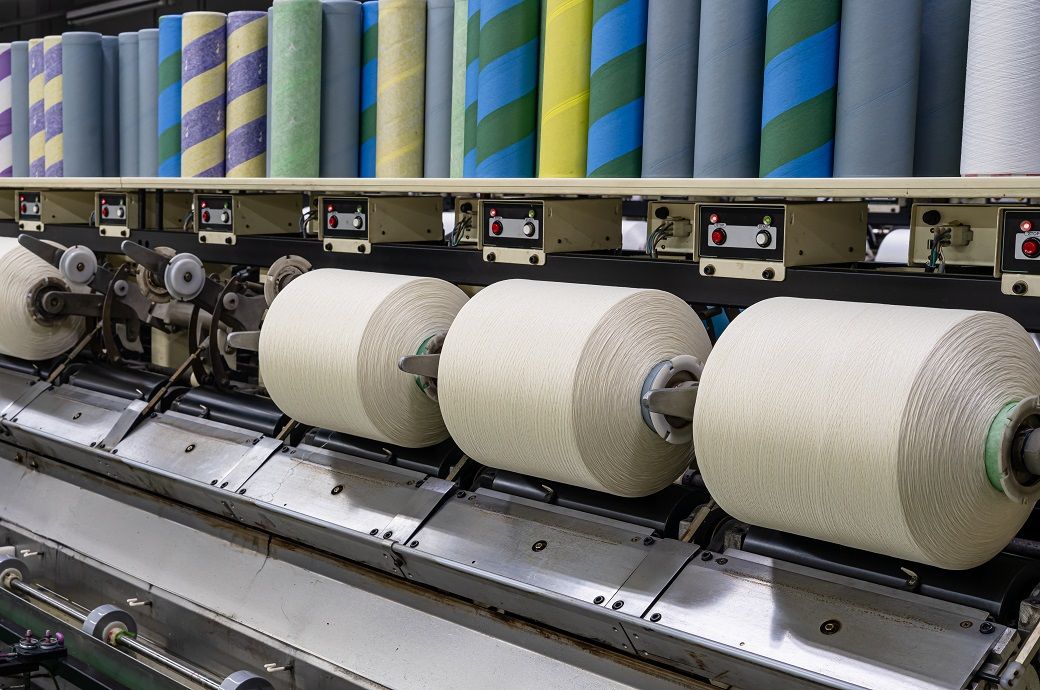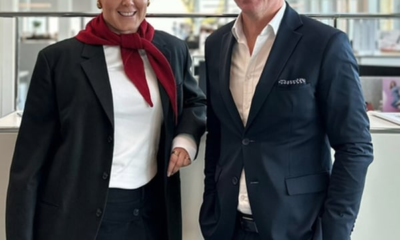Fashion
Jo Whitfield is new BRC chair, first woman to take the role

Published
August 28, 2025
The British Retail Consortium is getting a female chair for the very first time with former Matalan and Co-op exec Jo Whitfield to take over from Andy Higginson in early October.
Whitfield has a quarter of a century of experience in retail and is currently a non-executive and audit chair at Asda, a non-executive and chair of the ethics committee at Factory International, and host of the Manchester International Festival.
She also played a leading industry role campaigning alongside the BRC to achieve better safety recognition and a change to the law to protect retail shopworkers.
She’ll be joined by Eve Williams, as a new non-executive director on the BRC board. Again, she’s hugely experienced and is VP and general manager of eBay UK as well as having held executive marketing and customer roles in both eBay and at ASOS, before being appointed to her current role.
Whitfield said: “I’m honoured to be joining the BRC as its first female Chair, and to be supporting Helen and her team at such a pivotal time. Retail is an incredibly valuable industry, employing over 3 million people who support their families through their work. It’s also uniquely inclusive and many of us have built our careers from the shop floor or from working-class backgrounds, rising into leadership roles and enjoying fulfilling careers.
“Retailers are at the heart of communities, and we’re acutely aware of the many government policies currently under consideration that could either support or hinder our industry. This is a critical moment for us all and now more than ever, we need a strong, united voice. I look forward to working closely with Helen and the team to ensure the interests of our industry are championed and protected.”
And Helen Dickinson, BRC CEO, added: “Jo and Eve join the board as we deal with multiple public policy headwinds and more to do on big issues like climate change, inclusion, and creating the right environment for growth and investment. I know how passionate they both are on these areas and particularly on people so it’s great to welcome two more women to our board and our first female chair.
“It has been a pleasure working with Andy and I would like to thank him for his pragmatic, down-to-earth advice, leadership and support over the past two-and-a-half years. We are a stronger organisation for it.”
Copyright © 2025 FashionNetwork.com All rights reserved.
Fashion
American Eagle Outfitters raises annual sales forecast

By
Reuters
Published
December 2, 2025
American Eagle Outfitters raised its annual comparable sales forecast on Tuesday, betting on marketing-driven demand for its apparel and accessories during the holiday season, sending its shares up about 15% after the bell.
Marketing campaigns and newer collections of clothing, along with a focus on high-earning consumers, have helped the company offset losses from the broader retail slowdown and budget-conscious consumers pulling back on discretionary spending amid inflationary prices and trade-policy-driven uncertainty.
The company has been trying to boost demand through its marketing initiatives, including the “Great Jeans” denim campaign with actress Sydney Sweeney, a tie-up with NFL player Travis Kelce’s clothing brand Tru Kolors, and partnerships with tennis player Coco Gauff and actress Jenna Ortega.
The company sees annual comparable sales rising in the low single digits, compared to its previous expectations of about flat growth.
The company posted quarterly net revenue of $1.36 billion, compared with analysts’ estimates of $1.32 billion, according to data compiled by LSEG.
Quarterly comparable sales rose 4%, compared with analysts’ estimates of a 2.4% rise. The company sees current quarter comparable sales rising between 8% and 9%, compared with analysts’ estimates of a 2.2% rise.
© Thomson Reuters 2025 All rights reserved.
Fashion
Global manufacturing momentum weakens in November

Although three of the five PMI components continued to reflect improving operating conditions, employment and stocks of purchases contracted. Production and new orders rose for the fourth straight month, supported by consumer and intermediate goods, but investment goods saw renewed declines.
Thailand, India, Vietnam, Colombia, Pakistan and the US led global output rankings. The euro area and the UK registered mild growth, Japan contracted, and China saw output stagnate. Export demand remained a drag: global new export orders fell for the eighth consecutive month, though at the slowest pace in the current downturn. Developed markets such as the US, Japan and the euro area saw declines, while emerging markets, including mainland China and India, recorded increases.
Global manufacturing growth softened in November as the PMI slipped to 50.5, reflecting slower gains in output and new orders and a return to job losses.
Consumer and intermediate goods drove expansion, but investment goods weakened.
Export demand continued to contract, while business sentiment improved slightly yet stayed below average.
Inflation pressures persisted, especially in developed markets.
Business confidence edged up to a five-month high but stayed below its long-run average for the twentieth consecutive month. Brazil, Colombia and Thailand were the most optimistic, with the UK and the US also ranking high. The new orders-to-inventory ratio reached an eight-month peak, signalling tentative resilience ahead.
Employment fell for the second time in three months, with job cuts in China, the euro area and the UK offset by gains in the US, Japan and India. Backlogs of work continued to shrink, marking forty-one straight months of decline. Inventory, purchasing activity and input stock indices all pointed to contractions.
Input costs and factory-gate prices rose again, with inflation pressures sharper in developed markets. Supply chains remained strained as average vendor delivery times lengthened for the eighteenth month running.
“The JP Morgan global manufacturing output PMI fell back 0.3-points to 51.2 in November, a level consistent with modest but resilient growth in global industry. In our forward-looking indicators, the future output PMI made a reassuring 1.4-point rebound after dropping in October, though this was tempered somewhat by a fall in the new orders index to a four-month low. By economy, output in the US and India are still expanding at solid rates, whereas the performances in China and the rest of the G-4 remain lacklustre in comparison,” Maia Crook, Global Economist at JP Morgan, said in a release.
Fibre2Fashion News Desk (KD)
Fashion
Chinese group JD.com secures majority stake in holding company MediaWorld–Saturn

By
Ansa
Published
December 2, 2025
Chinese group JD.com has acquired an 85.2% stake in Germany’s Ceconomy, the holding company that controls the MediaMarkt (MediaWorld in Italy) and Saturn retail chains, in a deal worth €2.2 billion, according to several specialist trade publications.
Around 60% comes from JD.com’s takeover bid, with the remainder resulting from an agreement with Convergenta, the Kellerhals family’s holding company, which will retain a 25.35% stake. The company announced it in a statement.
Germany’s federal antitrust authority gave its approval in September, noting that JD.com had previously been ‘active in Germany only to a very limited extent.’
However, according to Ceconomy, completion of the public tender offer is still subject to approval by the relevant foreign trade authorities and to approval under the EU Foreign Subsidies Regulation. Completion is therefore expected in the first half of 2026.
This article is an automatic translation.
Click here to read the original article.
Copyright © 2025 ANSA. All rights reserved.
-

 Sports1 week ago
Sports1 week agoWATCH: Ronaldo scores spectacular bicycle kick
-

 Entertainment1 week ago
Entertainment1 week agoWelcome to Derry’ episode 5 delivers shocking twist
-

 Politics1 week ago
Politics1 week agoWashington and Kyiv Stress Any Peace Deal Must Fully Respect Ukraine’s Sovereignty
-

 Business1 week ago
Business1 week agoKey economic data and trends that will shape Rachel Reeves’ Budget
-

 Tech2 days ago
Tech2 days agoGet Your Steps In From Your Home Office With This Walking Pad—On Sale This Week
-

 Politics1 week ago
Politics1 week ago53,000 Sikhs vote in Ottawa Khalistan Referendum amid Carney-Modi trade talks scrutiny
-

 Tech1 week ago
Tech1 week agoWake Up—the Best Black Friday Mattress Sales Are Here
-

 Sports2 days ago
Sports2 days agoIndia Triumphs Over South Africa in First ODI Thanks to Kohli’s Heroics – SUCH TV

















